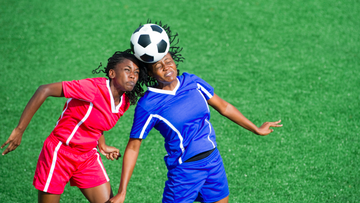Here’s a not-so-fun fact for the short goalkeepers out there: the average height of a Premier League goalkeeper is 1.9 meters (6 ft 3 in) tall. Of course, it comes as no surprise that goalkeepers tend to be the tallest players on the pitch.
So being a shorter goalie can feel like an obstacle. But standing a bit shorter than average doesn’t mean goalies have to hang up their gloves. This post will provide insights and tips to help shorter keepers make the most of their talents and excel.
Examples of Successful Short Goalkeepers
Yes, some of the greatest keepers on the planet right now are gigantic. Manuel Neuer stands at 6 ft 4 in tall, Gianluigi Donnarumma stands at 6 ft 5 in tall and Thibaut Courtois stands at a mountainous 6 ft 7 in. There are shorter ones who barely stand at 6’0 such as Yann Sommer. Of course, there are even shorter ones who have made themselves legends.
Small Frames, Big Names
There are many more examples, of course, but these three successful goalkeepers perfectly illustrate that height is nothing but a number. With that said, shorter goalkeepers have to compensate for a lack of height by focusing on particular skill sets. That’s where the right training comes into play.
Skills and Traits to Focus On
Shorter goalkeepers can be just as great (if not greater) than taller ones. However, they have to make sure that they’re technical chops are refined to make those saves that shorter limbs may have trouble making. There are four core areas of focus: explosiveness & reactions, footwork & diving technique, highball & handling, and positioning.
Explosiveness & Reactions
Great goalkeepers can pivot, leap, jump and move in any direction - instantly. In other words, they explode toward the ball, wherever it goes, whenever it comes. This is explosiveness. An explosive goalkeeper doesn’t wait for the ball - they shuffle the feet or explode off the line and attack the ball when it heads their way.
The more reactive and mobile you become, the faster you will move towards the ball. That comes in handy when you don’t have that added height or limb length to save a wide or high shot. Fortunately, you can train explosiveness with drills such as squat jumps, ankle poppers and reflex exercises with tennis balls.
Footwork & Diving Technique
Footwork isn’t all about finesse - it will make or break a goalkeeper, especially if they’re shorter. If you can’t easily catch those wide or high shots, you need to get into a good position quickly (more on this later), and tight footwork will help you get in position. You need fast and light feet so you can move wherever you need to at a moment’s notice.
Being a great diver is also important (and a no-brainer). The more acrobatic you are as a diver, the more shots you can reach and block. A great way to practice your footwork is with ladder drills as they help to build coordination, agility and explosiveness. For diving, make sure you practice the basic diving stance but also cone drills to help develop your reaction time.
Highball & Handling
Shorter goalkeepers may have a harder time challenging attacking players in high ball scenarios. It’s not just a matter of reaching for the ball - many goalkeepers, especially younger ones - hesitate or fear a high ball because of making contact with a player or making a mistake.
Training for a high ball situation is a matter of repetition. The more you practice reaching for a high ball, the less fearful you’ll become of a challenge and the better you’ll get at making the save. It’s important to learn how to step, leap and catch the ball, so goalkeepers should practice these fundamentals first.
However, you should also get into the habit of performing high ball challenges as well during practices. A good way to prepare for high ball situations is to have a ball thrown towards an attacking player and a keeper, so that the keeper steps into the play to make a catch or save.
Positioning
Positioning is perhaps the most crucial skill for short goalkeepers to master. It’s all about developing situational awareness, knowing where you are standing in relation to the net, the box, the ball and the opponent. The general rule of thumb is this - the better your positioning, the more effective you will be at making saves.
Positioning requires a blend of technical skills (footwork, explosiveness) and tactical ability (concentration, visual awareness). Fortunately, you can train your positioning skills in many ways. One way to do this is by using drills where goalkeepers have to choose and mark their positions on many different shots and then trying to save those shots.
Choosing Gear for Shorter Keepers
Goalkeepers need to choose the best equipment they can, whether it’s protective gear or goalie gloves. However, shorter goalkeepers might need to pay a little more attention to certain areas, because they need to perform more acrobatics to save shots than taller keepers. With that said, there are some forms of soccer protective gear that goalkeepers should be more aware of.
Important Gear for Shorter Goalkeepers
Never Too Short On Ability
Being a shorter goalkeeper may seem like a disadvantage when the best ones seem to be giants. But great goalkeeping relies on skill, not height. The more skilled you become at the technical and tactical requirements of elite goalkeeping, your height won’t seem to matter much at all. In fact, it’s very possible that your focus on skills taller goalkeepers take for granted, may help you stand out from the rest of the squad.
Looking for goalkeeping gear? Browse through our collection of protective gear and accessories for goalkeepers.

